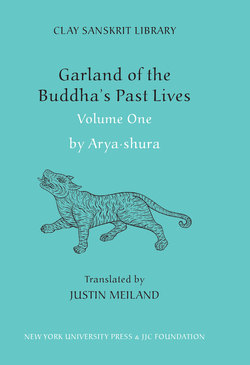Читать книгу Garland of the Buddha’s Past Lives (Volume 1) - Aryashura - Страница 14
На сайте Литреса книга снята с продажи.
Оглавление(1981), who has shown that passages composed by the Indian poet Hari·bhatta (Haribhatta) are quoted in a Chinese text called “The Sutra of the Wise Man and the Fool” (Hsien-yu-ching), which dates to 445 ce, thereby providing a lower limit for the author. Since Hari·bhatta openly refers to Arya·shura as his paradigm (Hahn 2007: 4), we can assume that Arya·shura lived earlier than Hari·bhatta (as is also suggested by their literary styles), although how much earlier is unclear.
The title Jatakamala can be translated literally as “a garland of birth-stories.”8 It is a term that appears to have been treated as a sub-genre within the jataka tradition, since it is also used of later works composed by authors such as Hari·bhatta (fifth century ce) and Gopa·datta (eleventh century ce).9 The Jatakamala is not the only work said to have been composed by Arya·shura. The Tibetan Tanjur lists five other texts: the Bodhisattvajatakadharmagandi, the Subhasitaratnakarandakakatha, the Supathadesanaparikatha, the Pratimoksasutrapaddhati, and the Paramitasamasa (Meadows 1986: 3ff.). Of these, only two, the Subhasita- ratnakarandakakatha and the Paramitasamasa, still exist in Sanskrit, while the others are available in Tibetan translation. It is uncertain, however, whether to take these attributions at face-value. Buddhist traditions commonly seek to invest a text with authority by associating it with a famous figure and there seems to have been considerable confusion over the identity of Shura (Sura), who is linked with names such as Matri·cheta (Matrceta) and Ashva·ghosha (Asvaghosa) (Meadows 1986: 6f.). Carol Meadows (1986: 8ff.) also argues that doctrinal divergences between _______________________
